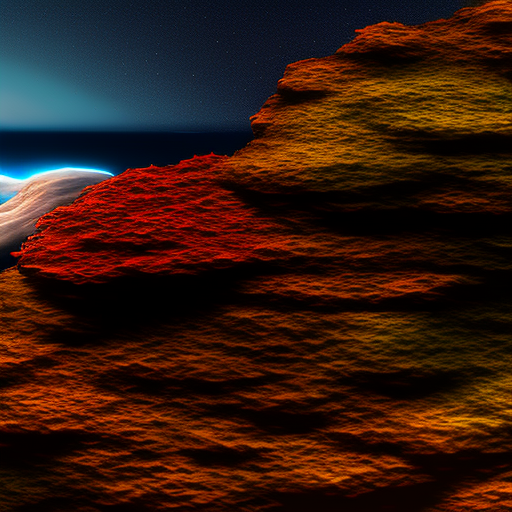
The Enigmatic Seas and Storms of Neptune’s Surface
Introduction
Neptune is the eighth and last planet in our solar system, located about 4.5 billion kilometers away from the Sun. It is a gas giant, meaning that it has no solid surface like Earth, but rather consists mainly of hydrogen, helium, and other gases. However, despite its lack of a solid surface, Neptune is known for its enigmatic seas and storms that cover its entire atmosphere.
The Seas of Neptune
The seas of Neptune are actually giant storm systems that have been observed by telescopes and spacecraft. These storms are believed to be formed by the mixing of different gases in the atmosphere, as well as the effects of the planet’s strong winds and magnetic fields. The largest of these storms is known as the Great Dark Spot, which was first observed by the Voyager 2 spacecraft in 1989. This storm is about the size of the Earth and has been compared to the Great Red Spot on Jupiter, although it is much more dynamic and less stable.
Other notable storms on Neptune include the Small Dark Spot, which is about the size of the United States, and the Scooter, which is a high-speed storm that travels around the planet at more than 2,400 kilometers per hour. These storms are constantly changing in shape, size, and intensity, making Neptune a truly dynamic and fascinating planet to study.
The Storms of Neptune
In addition to its seas, Neptune is also known for the many storms that rage across its atmosphere. These storms are caused by the planet’s strong winds, which can reach speeds of up to 2,100 kilometers per hour, or about three times the speed of sound.
- The first storm to be observed on Neptune was the Great Dark Spot, which was about the size of the Earth and lasted for about five years before disappearing.
- Another notable storm is the Small Dark Spot, which is about the size of the United States and was first observed in 1989.
- The Scooter is another storm that travels around the planet at high speed, but it is much smaller than the Great Dark Spot or the Small Dark Spot.
Neptune is also known for its strange weather patterns, such as its periodic storms that appear to reoccur at regular intervals. These storms, known as “dark spots”, are believed to be caused by a combination of factors, including the planet’s rotational velocity and the dynamics of its atmosphere. They are also affected by Neptune’s magnetic field, which can cause the storms to drift and change shape over time.
Conclusion
Neptune is a truly fascinating planet, with its enigmatic seas and storms that cover its entire atmosphere. Despite its distance from Earth, modern telescopes and spacecraft have allowed us to study this distant world in great detail, uncovering many of its secrets and mysteries. As we continue to explore our solar system and beyond, Neptune will no doubt remain a key focus of scientific study and discovery.
